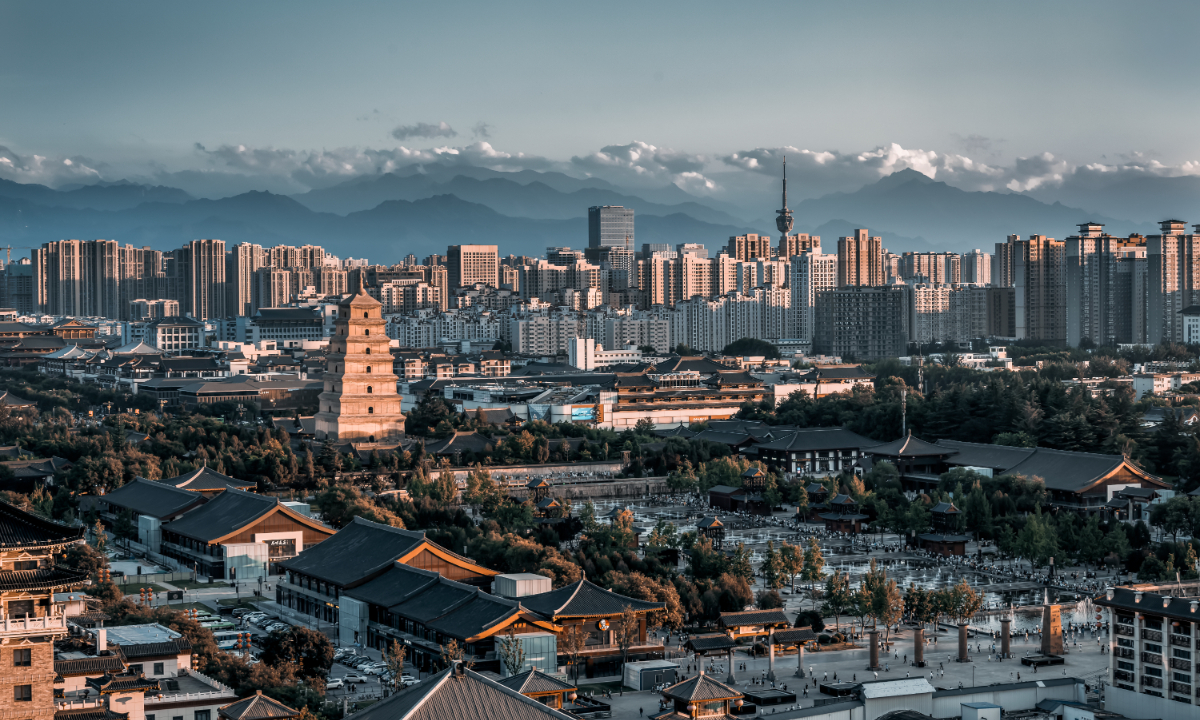Xi’an, an ancient Chinese city, stands as a testament to the country’s rich historical tapestry. As the starting point of the renowned Silk Road, the city has seen the rise and fall of 13 dynasties, making it a significant cultural and historical hub. Recently, in tandem with the 2023 Media Cooperation Forum on Belt and Road in Beijing, Xi’an played host to a delegation of media representatives from 10 Belt and Road member countries, coordinated by the People’s Daily.
Serik Korzhumbayev, editor-in-chief of the DK News Agency in Kazakhstan, shared his fond memories from a previous visit to Xi’an. Recalling the city’s dynamic blend of modern vibrancy and deep-rooted history, he expressed his eagerness to delve deeper into its many treasures.
The delegation’s journey through Xi’an was a rich amalgamation of historical exploration and cultural appreciation. Key highlights included the Emperor Qinshihuang’s Mausoleum Site Museum, home to the iconic Terracotta Warriors of the Qin Dynasty. The group also marveled at the Huaqing Palace’s splendor. Nestled at Lishan Mountain’s base, this former imperial winter retreat is renowned for its hot springs and the legendary love tale of Tang Emperor Li Longji and his beloved concubine, Yang Yuhuan. The palace presently hosts a mesmerizing musical drama, “The Song of Everlasting Sorrow,” that beautifully encapsulates their tragic love story, resonating deeply with audiences across cultural spectrums.
Another must-visit was a Tang Dynasty-themed block in Xi’an, which surged in popularity after the 2019 release of the historical drama, “The Longest Day in Chang’an.” This tourist attraction replicates scenes and structures from the series, transporting visitors back to the Tang Dynasty’s era. As the delegation wandered through the block, they were treated to an array of performances that vividly showcased the Tang Dynasty’s daily life and culture. The presence of locals dressed in traditional hanfu clothing added to the immersive experience.
A city as culturally rich as Xi’an boasts a culinary heritage reflective of its historical depth. Particularly notable is the city’s Muslim community’s influence, which can be tasted in the Huimin Street area. Here, dishes such as roujiamo and yangrou paomo tantalize taste buds with Islamic culinary inspirations. Additionally, the city is a haven for noodle enthusiasts, offering a plethora of varieties.
The delegation’s culinary expedition continued at the Aiju Grain and Oil Industrial Group, where they donned chef hats to learn traditional cooking techniques. Here, the art of making biang biang noodles, named for the sound of the noodles hitting the table, was taught by local culinary experts.
Moreover, the center showcased imported products brought via the China railway Chang’an express freight train. It was an impactful moment for a Kazakh member to discover ingredients from his homeland were used in their culinary endeavors, highlighting the interconnectedness fostered by the Belt and Road Initiative (BRI). Witnessing the bustling activity at the Xi’an Free Trade Port further solidified the BRI’s significance in bridging global distances and enhancing cultural exchanges.
READ MORE:
